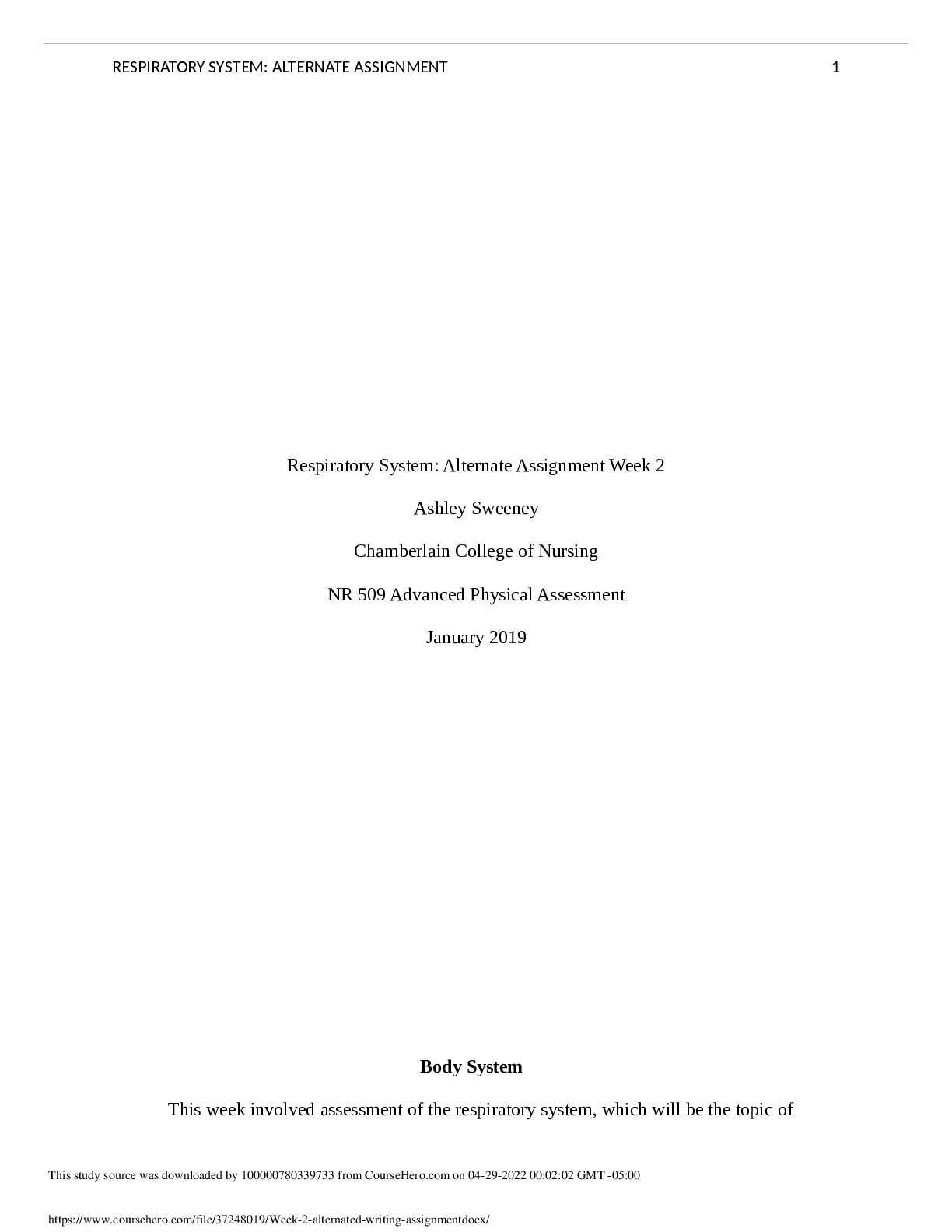Respiratory System Alternate Assignment Week 2 Advanced Physical Assessment (NR 509)
Course
Subject
Chemistry
Category
Essay
Pages
8
Uploaded By
ATIPROS
Preview 2 out of 8 Pages


Download all 8 pages for $ 6.50
Reviews (0)
$6.50
